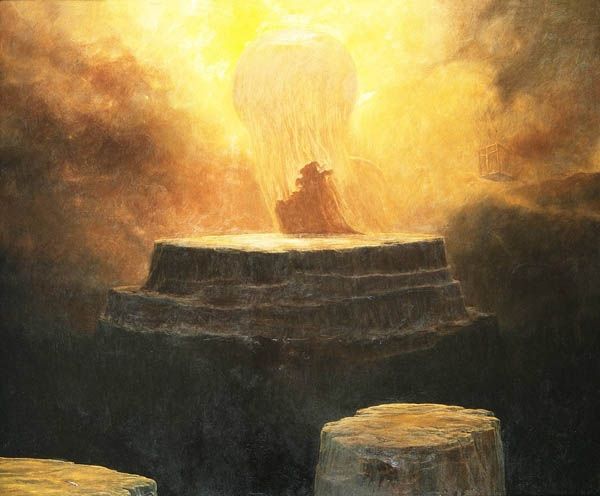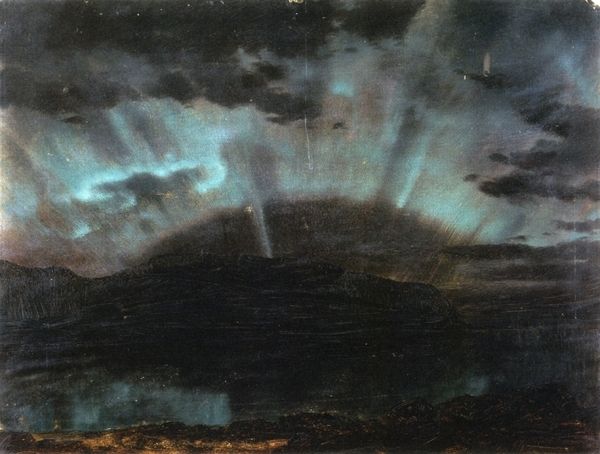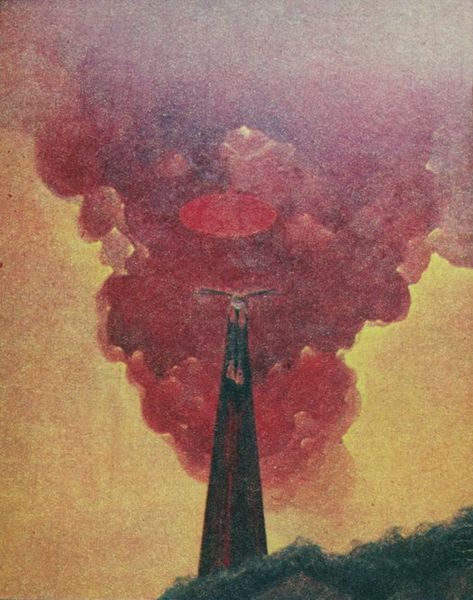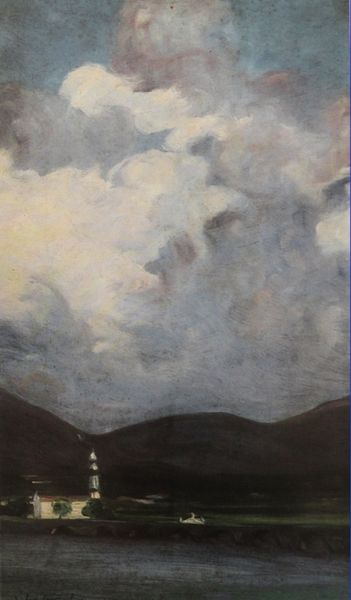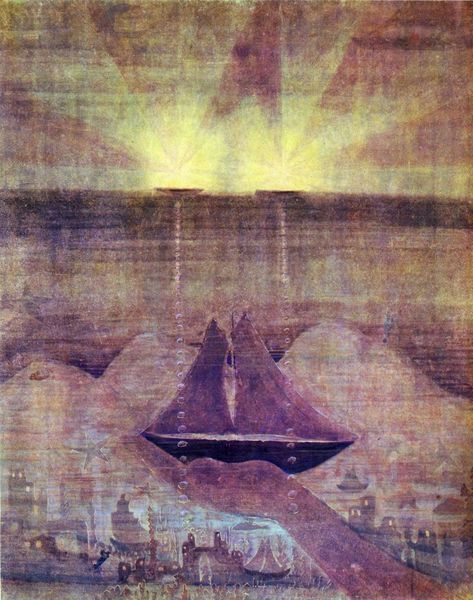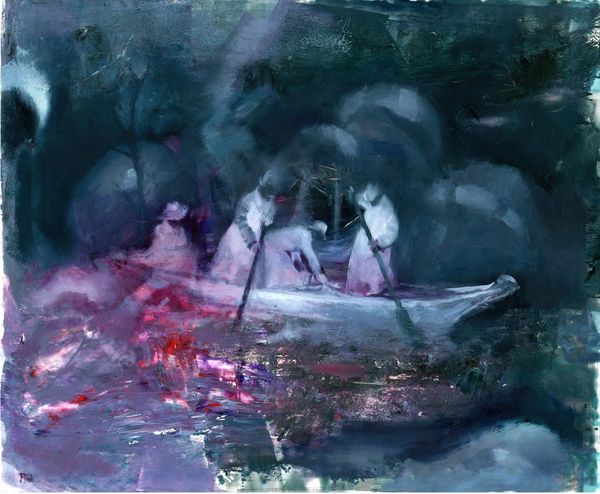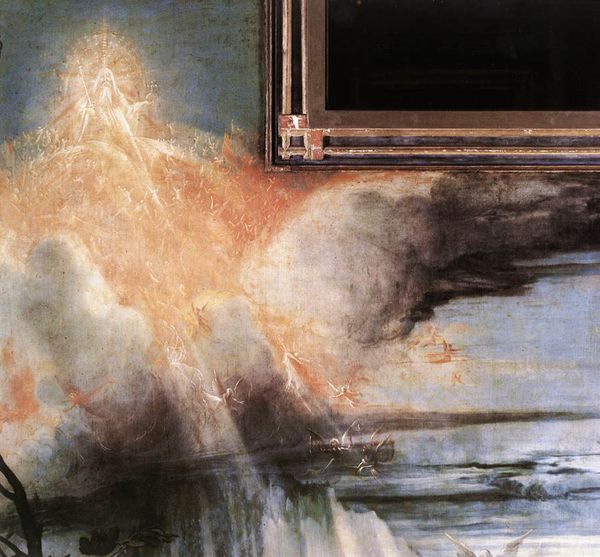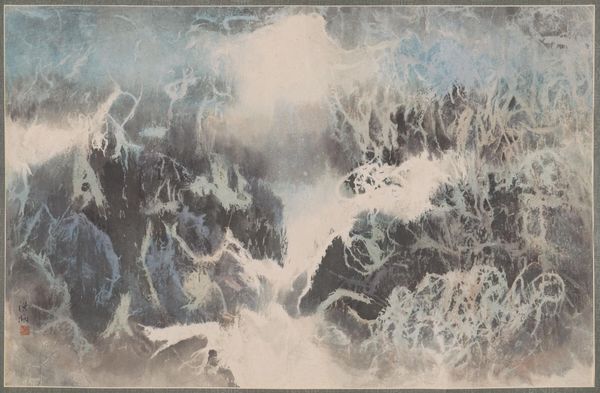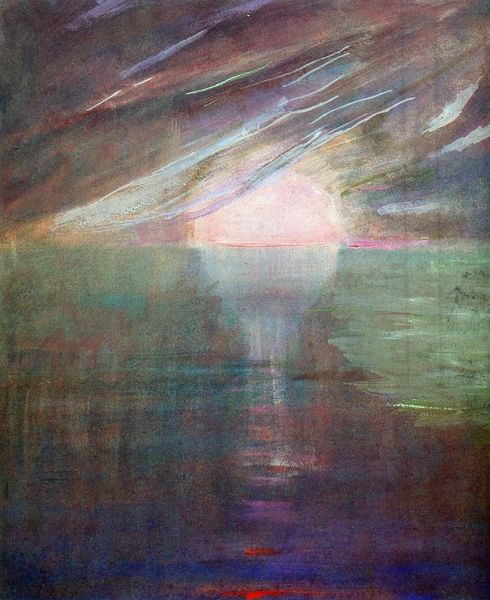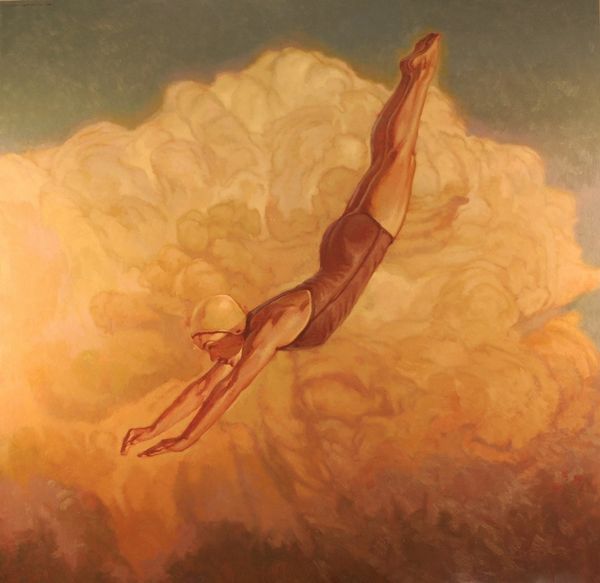
Copyright: Public domain
Editor: This is "Shipwreck of Lefort," painted by Ivan Aivazovsky in 1858. It’s an oil painting, and wow, it’s just... overwhelmingly dark. The scene is dominated by a powerful light at the top, contrasting so intensely with what seems like utter chaos below. What symbolic meaning do you see embedded within this piece? Art Historian: Aivazovsky certainly crafts a potent image. Note the strategic use of light—it doesn't merely illuminate; it signifies. The radiant figure above evokes not just rescue but transcendence, doesn’t it? Given the title referencing the Lefort shipwreck, think about how such disasters resonated in Russian cultural memory. Shipwrecks held tremendous symbolic weight, embodying the precariousness of human ambition against nature's force, particularly within the Romantic Movement, which heavily favored such dramatic clashes. Editor: That makes a lot of sense, connecting it to Romanticism and that human vs. nature struggle. So, is the light representing salvation then, amidst this catastrophic event? Art Historian: Exactly! Ask yourself what symbols commonly denoted salvation during that era and in that specific culture. Are there elements reminiscent of religious iconography, perhaps a divine figure leading lost souls to safety? The figures reaching up, the overall composition; these reinforce the yearning for deliverance from the chaotic depths, a theme pervasive across many cultures and faiths during periods of uncertainty or disaster. The light then becomes more than just light, wouldn't you agree? It represents hope and a visual promise. Editor: I see it now! Initially, I just saw a really dramatic depiction of a shipwreck. But recognizing the Romantic context, along with Aivazovsky using religious symbolism for hope, gives the whole painting a deeper, more hopeful message. Art Historian: Precisely! And consider how such visual language fosters cultural continuity and provides emotional catharsis in the face of collective trauma. This way the image evolves from depicting chaos to expressing resilience, subtly influencing cultural understanding over time.
Comments
No comments
Be the first to comment and join the conversation on the ultimate creative platform.

